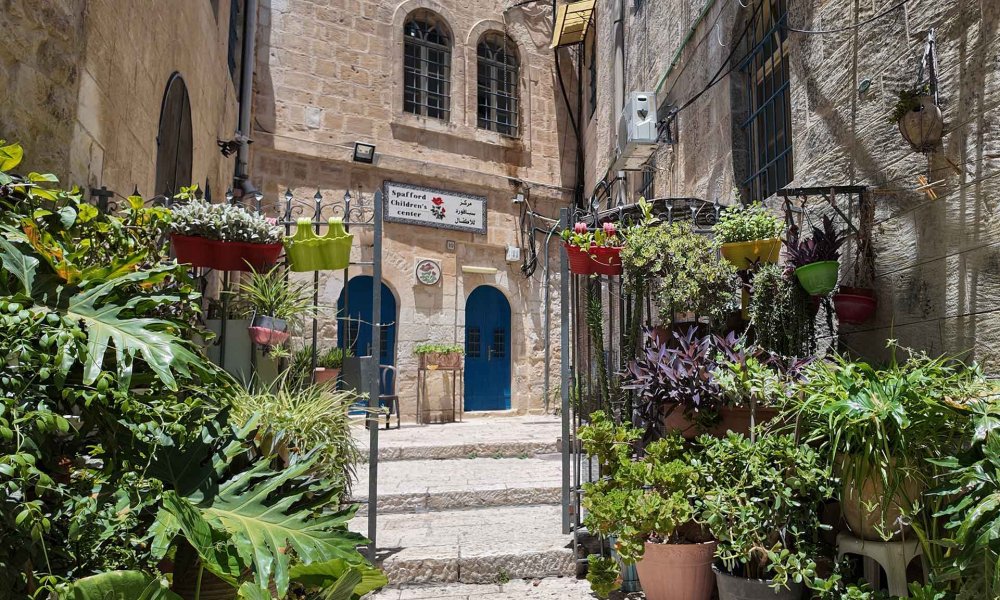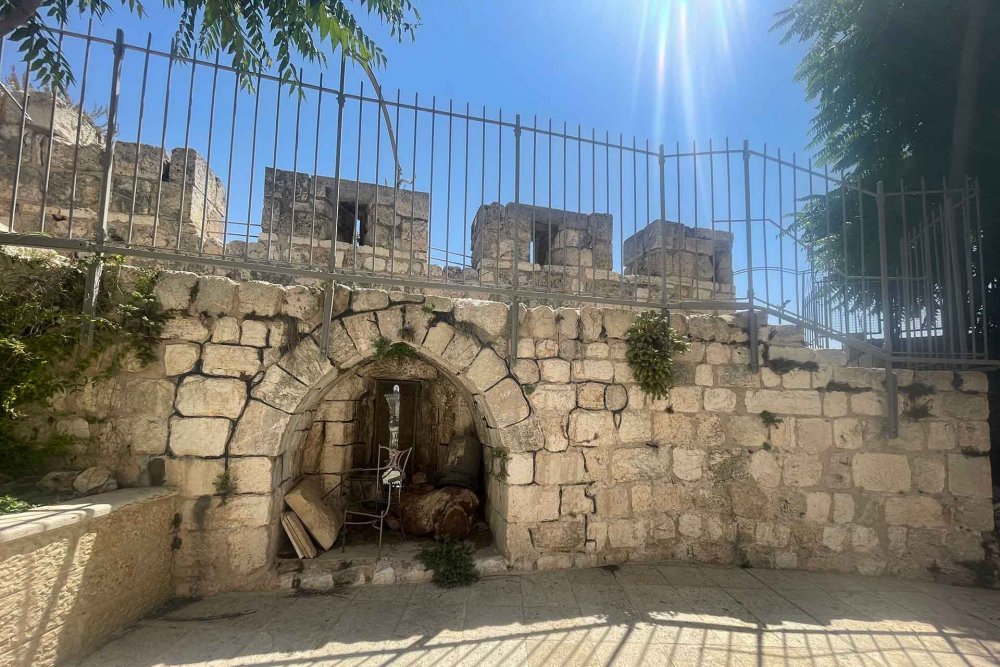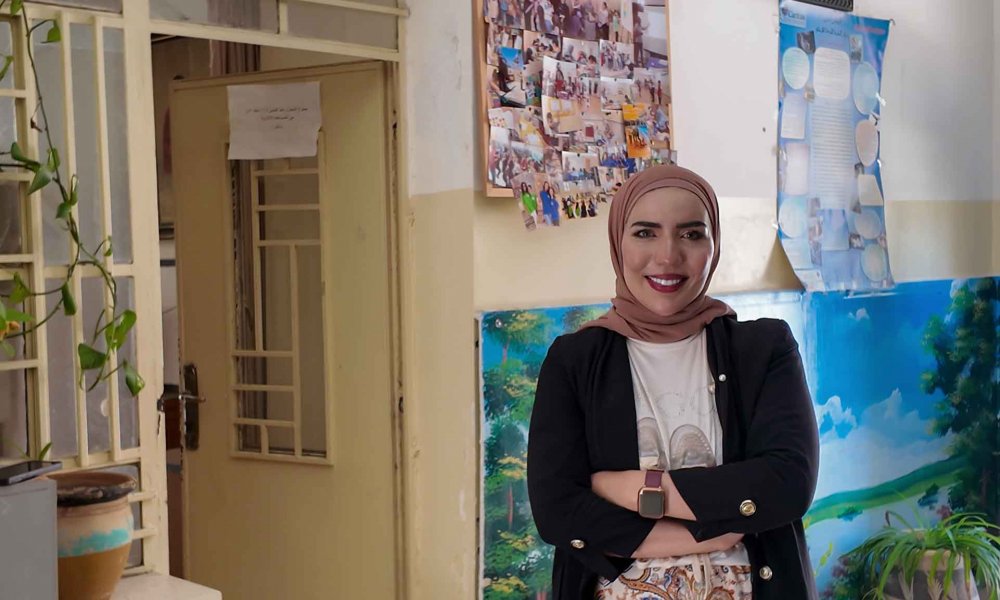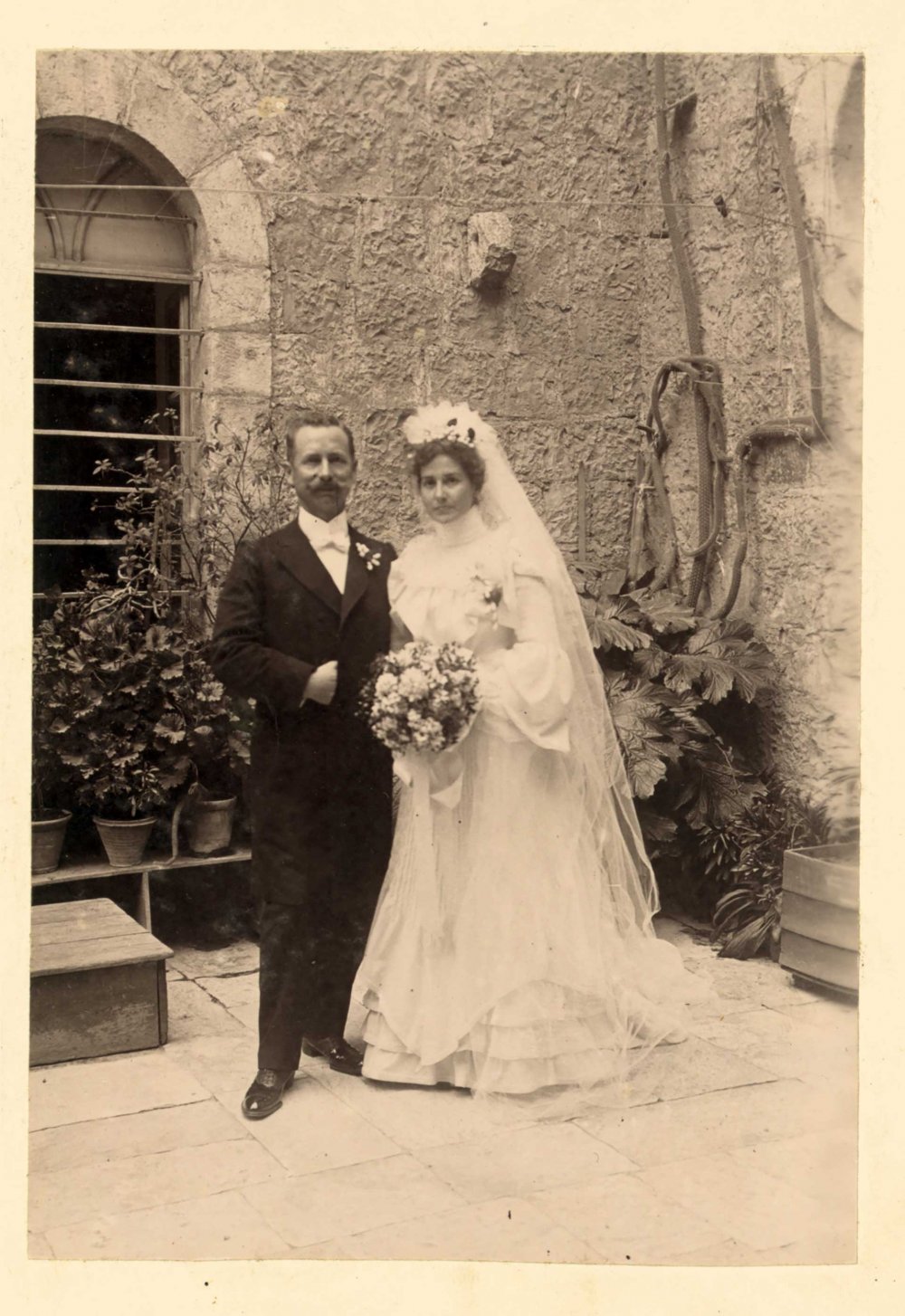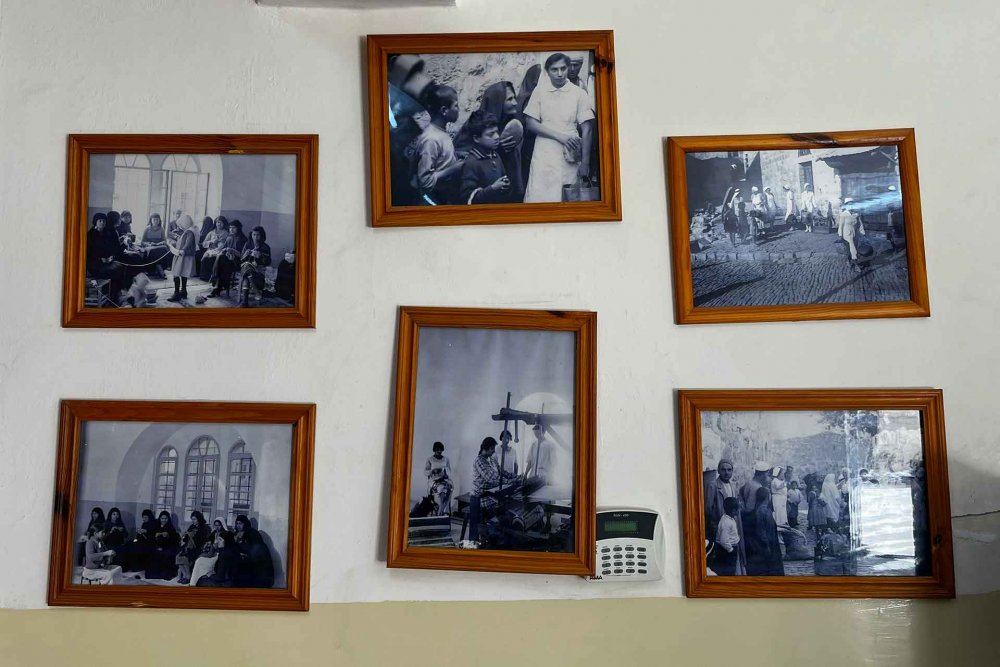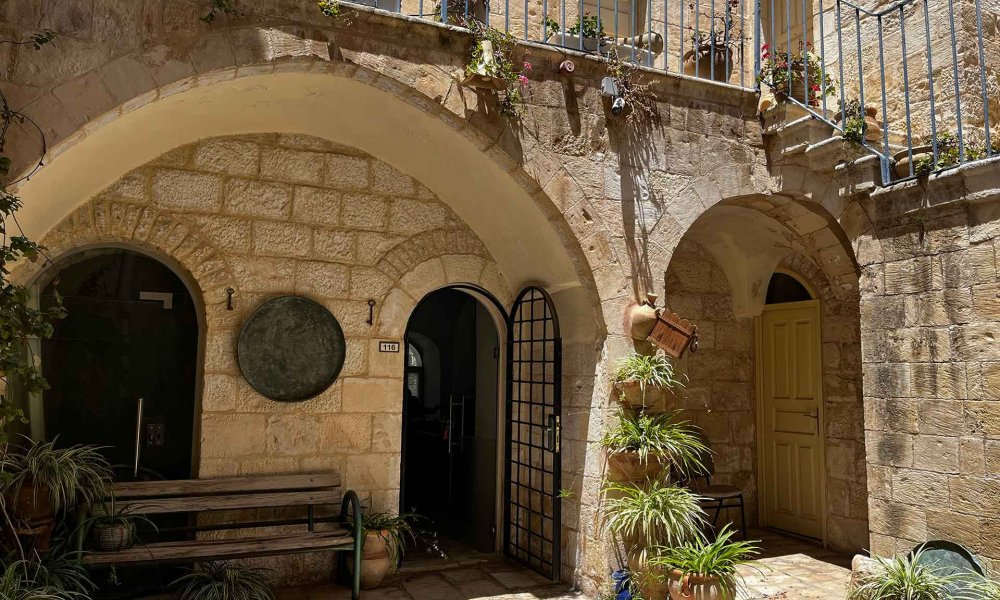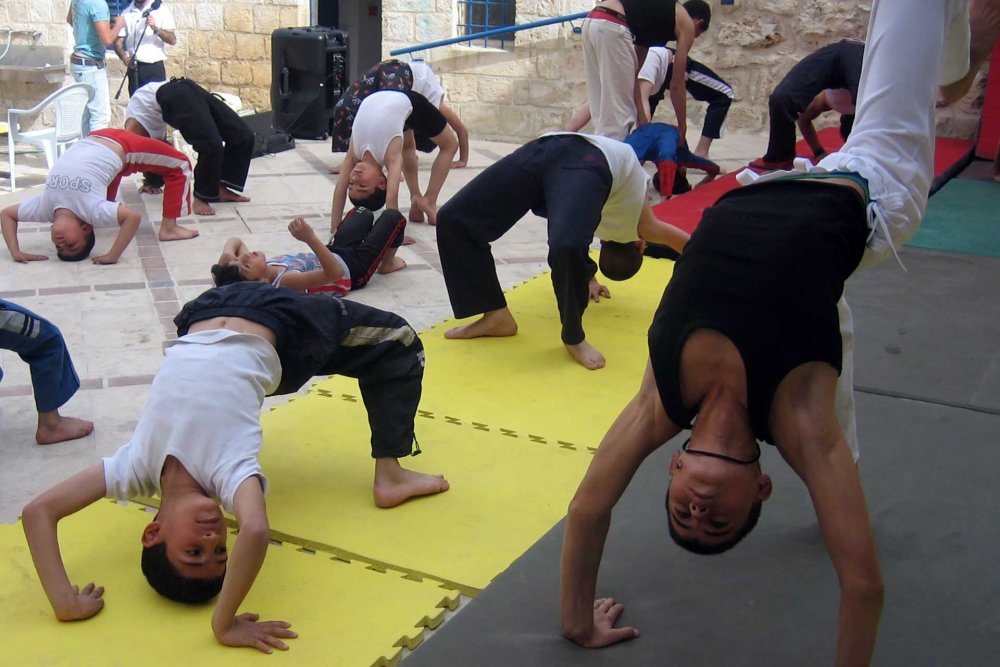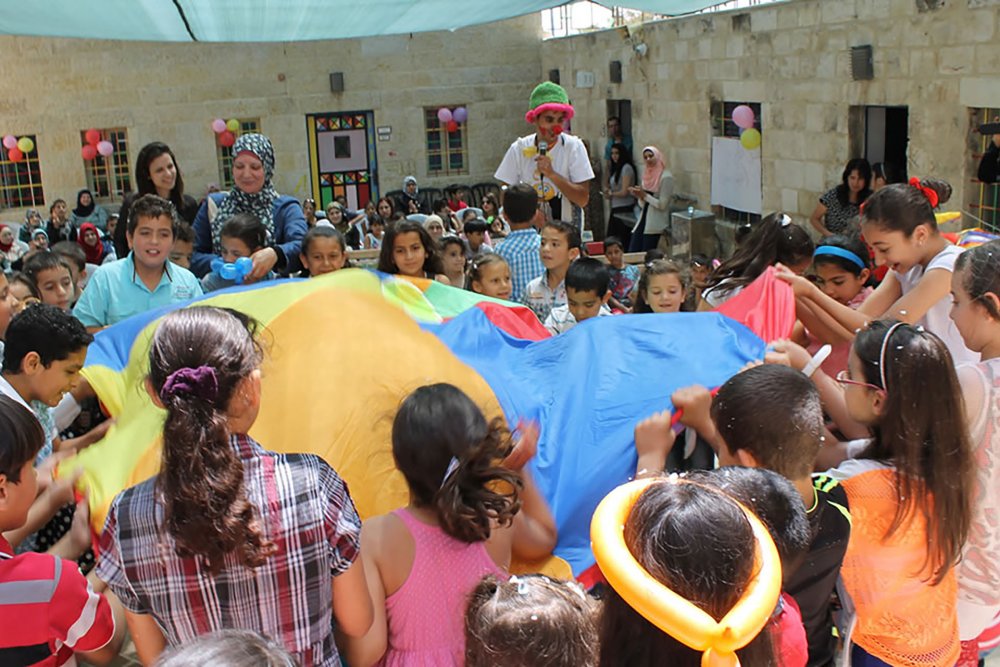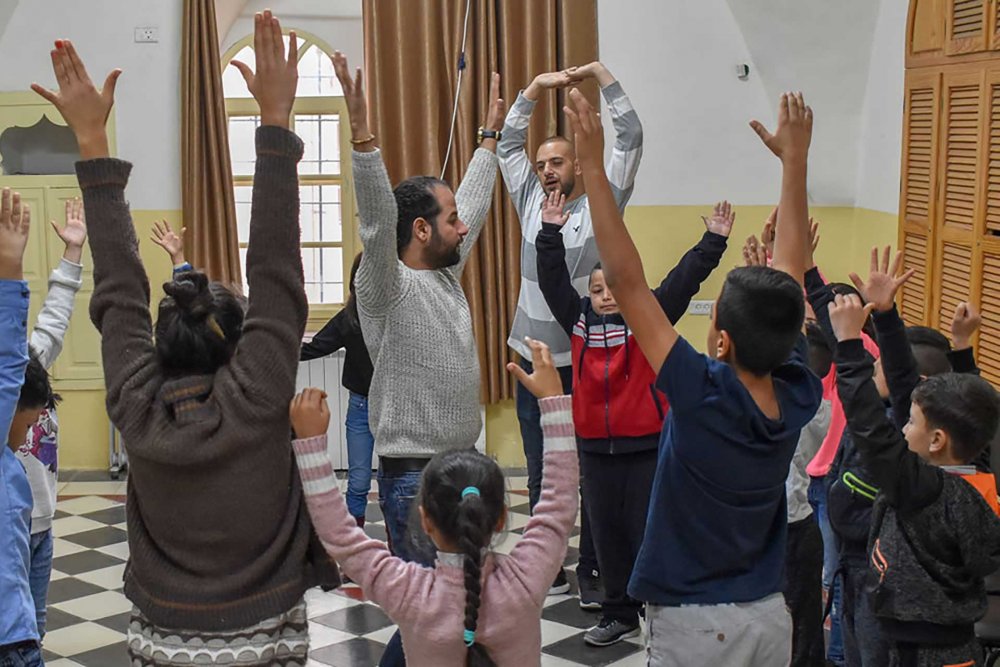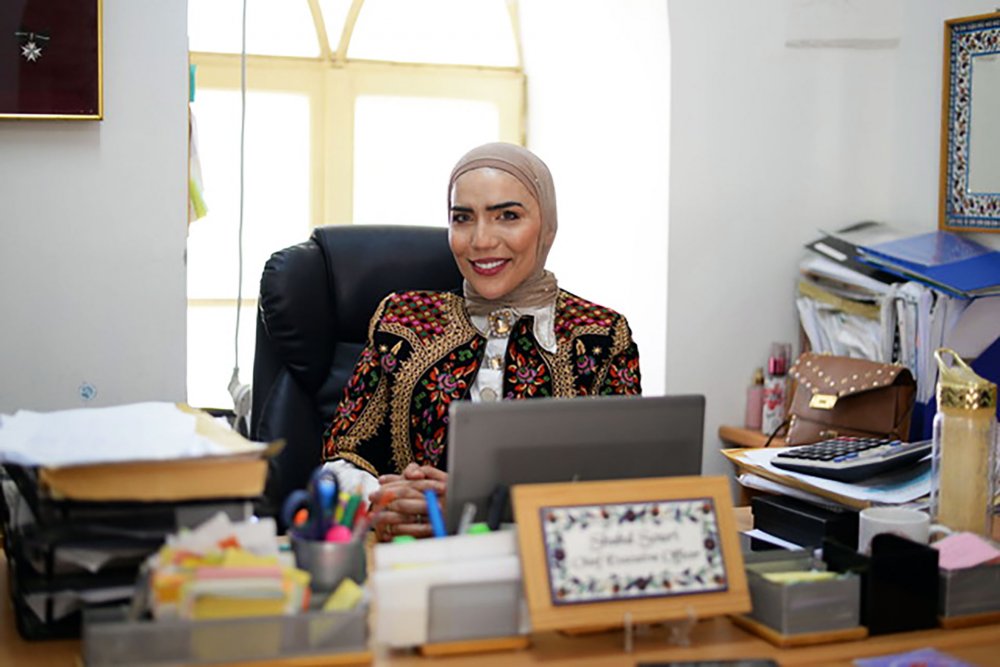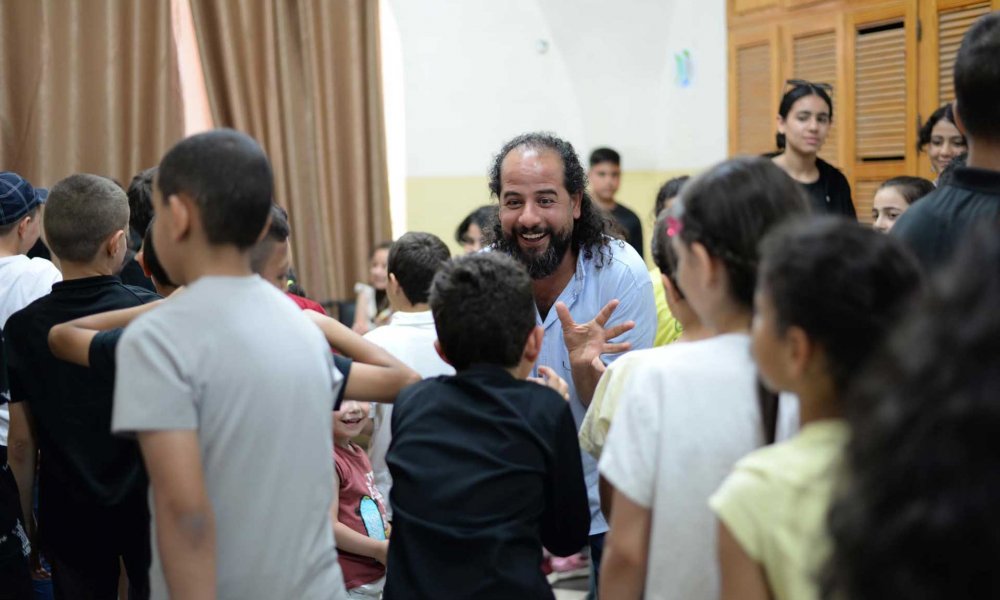If you’ve ever wondered where is the highest point of the ancient Old City wall between Damascus Gate and Herod’s Gate, here’s the answer: at the Spafford Children’s Center. To get there from Damascus Gate, you must walk up 100 stairs, which end at the intersection of al-Sheikh Lulu Street and Muna Court. A ceramic sign in English and Arabic above the entrance to an old, well-maintained building tells you where you are.
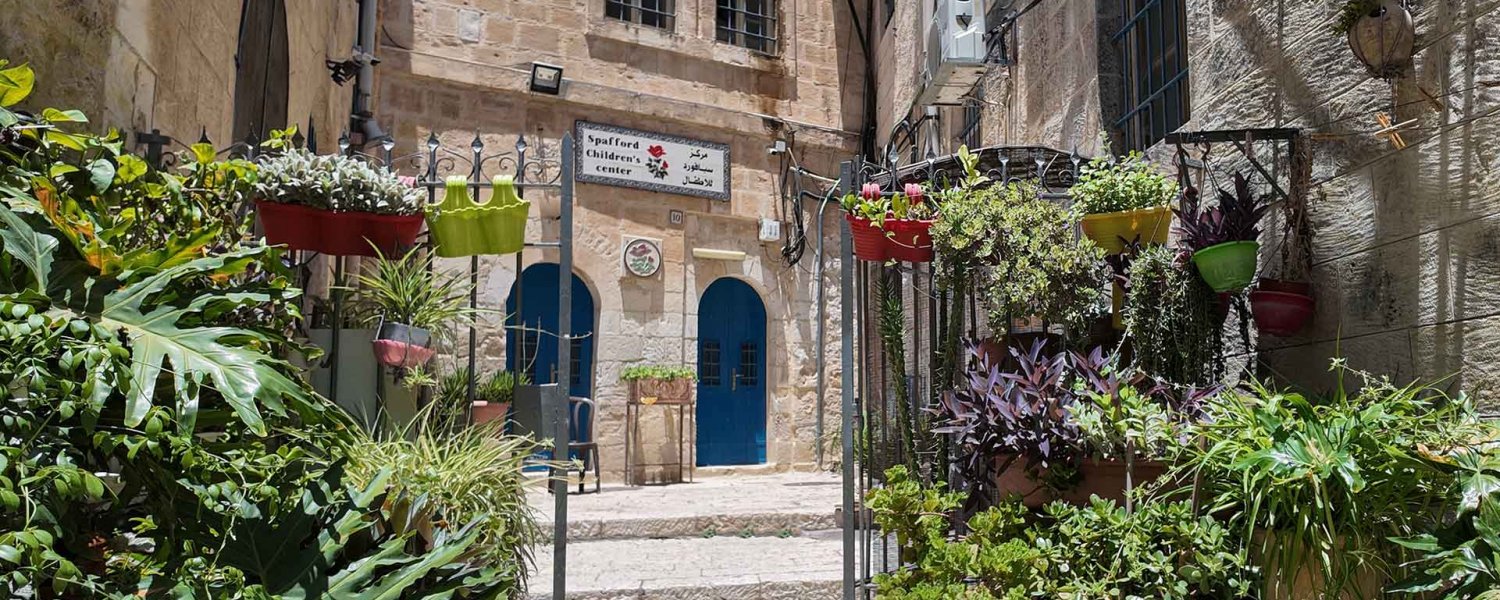
Credit:
Mays Shkerat for Jerusalem Story
Spafford Children’s Center: A Place of Safety and Healing for Jerusalem Children for Almost a Century
“The older generation of locals knew the place as ‘the American Hospital,’” says Shahd Souri, Spafford Children’s Center’s chief executive officer.1
The Jerusalem Story Team met with Shahd recently in her office to learn more about this Jerusalem institution, now in operation for nearly a century. She was generous with her time and eager to talk about the mental health and wellness services the center provides to her beloved Jerusalem community.
The location is quite intriguing, as it is almost glued to a segment of the Old City wall. “Let me show you the roof,” Shahd offers. The view is spectacular, combining the majestic golden Dome of the Rock and the Church of the Holy Sepulchre, as well as modest dome-shaped houses. “Unlike other places, we don’t charge people for coming up the roof. This is a free space, and our friends and partners are welcome here,” she said.
The Origin of the Spafford Children’s Center
For Jerusalemites, the Spafford Center and the American Colony Hotel are twinned institutions, even though one is inside the Old City and the other is in Sheikh Jarrah. Both are prominent landmarks of Jerusalem and have their origins in the same colony of American, British, and Swedish pilgrims who moved to Jerusalem in the 1880s, mostly for religious reasons (see The Unusual Origins of an Iconic East Jerusalem Hotel).
The Spafford Children’s Center was started by Bertha Spafford Vester, eldest daughter of the Spafford family that led the American Colony. She married Frederick Vester, a British man who ran an antique shop connected to the colony near Jaffa Gate.
On Christmas Eve 1925, Bertha came across a Bedouin man, his sick wife, and their newborn baby in Bethlehem who had traveled for six hours in dire need of care and found the hospital closed to outpatients due to the holiday. Bertha was so struck by the plight of this family that she took action: she quickly took them in to the home in the Old City that had served as the colony’s first home before they moved to Sheikh Jarrah. Her intervention came too late for the mother, who passed away that night. The child’s father asked Bertha to care for the baby. This prompted Bertha to found a baby home there in honor of her mother, Anna, who had died in 1923. The orphanage, called the Spafford Baby Home, cared for babies orphaned in the wake of World War I.
This later developed into a children’s hospital with 60 beds that provided basic medical care for children and mothers from across the country, with qualified medics, surgeons, and pediatricians, as well as sewing classes for the girls.
For many years, this would be one of only two hospitals in the Old City of Jerusalem (the other being the Austrian Hospice).
An Essential Hub for Community Needs
The Spafford Hospital, which continued to evolve over the years to meet the community’s needs, has had a pivotal role in caring for the families in Jerusalem and beyond. It had excellent pediatricians and neurologists, Shahd explains, and provided medical aid, vaccinations, and catered to the needs of the community. It had a prominent role in 1948, serving the wounded and sheltering traumatized orphans during the Nakba and later. The hospital adapted to the needs of the community during a time of tumultuous political changes.
After Israel occupied East Jerusalem in 1967, the Israeli government took over the health care system and forced foreign or private entities to close or change their focus. Shahd says that the Austrian Hospice shifted its direction and became a guesthouse and café, but the Spafford Center was determined to retain its focus on treatment, because it knew that municipality facilities are often slow to respond to individuals’ needs, and people have to wait a long time for appointments. “Community members often come here instead,” Shahd explains.
In 1970, the center administration decided to turn the center into an outpatient clinic that provided preventive services and changed its official name to the Spafford Children’s Center. It stopped functioning as a hospital and in 1980 began to provide psychosocial, social, and educational support in East Jerusalem for children, especially poor children and those with cognitive difficulties. The medical clinic was closed in 2011, in part because the Separation Wall made access to the facility from outside the checkpoints around the city more difficult for Palestinians.
Despite all the challenges, the Spafford Children’s Center has continued to stay on track. Today, the center’s mission is to “provide a holistic approach to remedial teaching, psychological, cultural, and other related supportive services for children and families in need.”2
Its programs include remedial education (for those with learning difficulties), social work, psychological services, trauma recovery programs, and training workshops for teachers, mothers, and children. The center delivers support for parents whose children have development and learning issues, behavior problems, mild autism, post-traumatic reactions, speech and language problems, and attention deficit and hyperactivity disorder. The reliable team of therapists and treatment experts have proved valuable for counseling and supportive services. There are 22 full-time staff members, in addition to consultants, trainers, and instructors who are assigned per additional projects.
The center assists parents, children, and youth with empowerment workshops, as well as psychosocial, educational, therapeutic, and cultural programs. The latter include art workshops, dance, music, performance, drama, clowning, as well as summer camps; the artwork of the children is displayed in the library.
The center serves anywhere from 500 to 600 children a year; 89 percent of them are from the Old City of Jerusalem, and the rest live in the surrounding areas, including al-‘Izariyya, Shu‘fat, and Qalandiya.
“Ours is a holistic approach,” Shahd explains. “We provide care and services for vulnerable children, most of whom exhibit learning disabilities, emotional disorders, or traumatic stress.”
Making a Difference in Jerusalem
A Jerusalemite woman in her mid-30s, Shahd is a happily married mother of one son. Her family was displaced from Lydda in 1948 and settled in Jerusalem. “They hid in the caves south of Jerusalem,” she says. She got married at a young age to her husband, a Palestinian who lived in Sweden, but that did not deter her from pursuing her studies and career. She studied English language and literature at Birzeit University, lived in Sweden for some time, and then pursued her master’s degree in the UK.
In London, she interned at Chatham House, the Royal Policy Institute of International Affairs, and worked with Save the Children and commonwealth, charity-based, and awareness initiatives.
Early on, Shahd discovered that she was most passionate about humanitarian aid and was excited to help connect asylum seekers with psychosocial support and shelters. Even before going to university, she had volunteered at the Palestinian Academic Society for the Study of International Affairs (PASSIA), a well-respected think tank that conducts important research and studies on Jerusalem and many other issues. “I knew back then that I would ultimately be part of the NGO world, and that I would work in humanitarian aid,” Shahd reflects. She speaks several languages, including English, Arabic, Hebrew, French, and Swedish.
Not surprisingly, Shahd has had several opportunities to work in other countries, but she and her husband chose to make an impact in Jerusalem, a city that can be exhausting to live in.
In Jerusalem, Shahd believes, one can really make a difference, which she finds very meaningful. One senses that her mere presence motivates those around her. She is constantly pushing herself to learn, to move, and to share her knowledge. She describes herself as a proud member of the Jerusalem community despite all the obstacles (which are countless).
Shahd and her team feel connected to the children, the families, and the stories they share, and this sense of community is apparent to anyone who spends time at the center.
Importance of Mental Health
When asked what the East Jerusalem community needs the most, Shahd is emphatic: “Mental health, mental health, mental health!” She believes it is impossible to overestimate the importance of the mental health psychosocial support and counseling that the Spafford Center provides for the community members.
One center program focuses on the traumatic experiences of children. Yazan, a trauma specialist, uses different methods, including play, art, story writing, movement, and relaxation techniques, to help children express their disturbing emotions and find ways to cope.
During our conversation in Shahd’s office, a young volunteer steps in, carrying water bottles. Shahd is very proud of him: “He has been here since he was a little kid,” she explains. “His family brought him to us because he had cognitive issues, but it cheers me up to see how at home he feels at this space.”
The vision of the Spafford Children’s Center remains the same as it was when it was established: to “bring healing, hope, and prosperity to Palestinian children and their families in Jerusalem by offering programs and services that increase health in mind, body, and spirit.”
The center’s local energy says something about the tenacity of the community despite wars and political oppression of Jerusalemites and their institutions, especially within the Old City walls.
Notes
Shahd Souri, interview by the author, July 10, 2024. All subsequent quotes from Souri are from this interview.
“Our Mission,” Spafford Children’s Center, accessed August 29, 2024.

